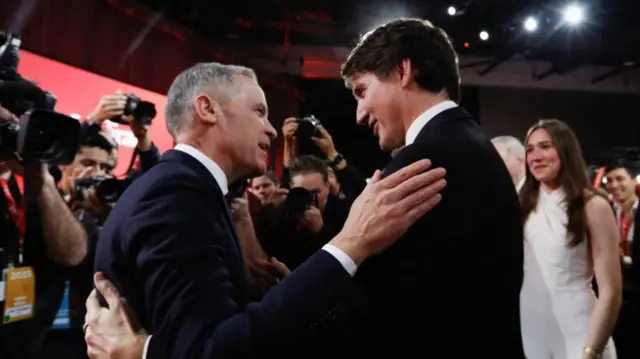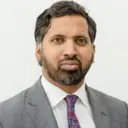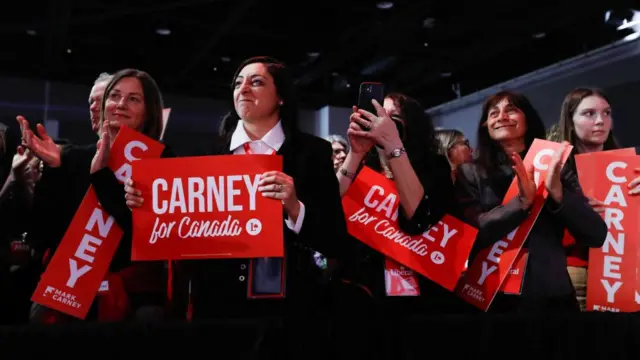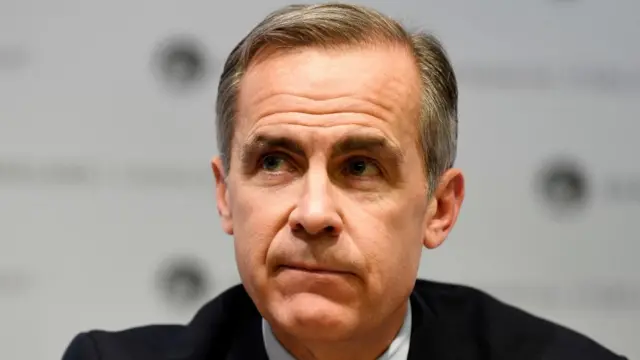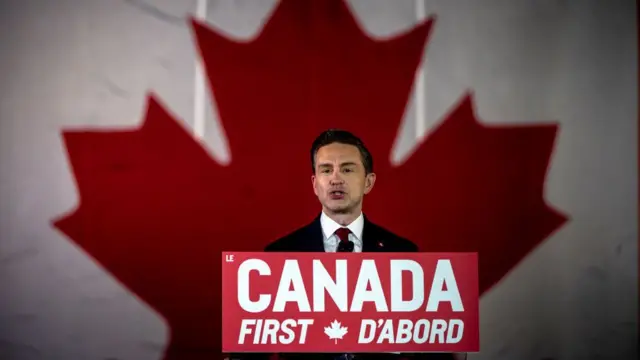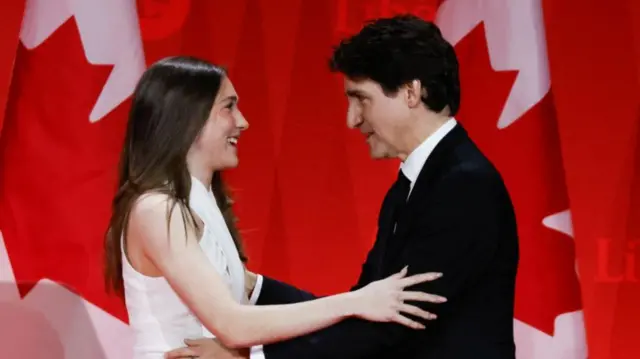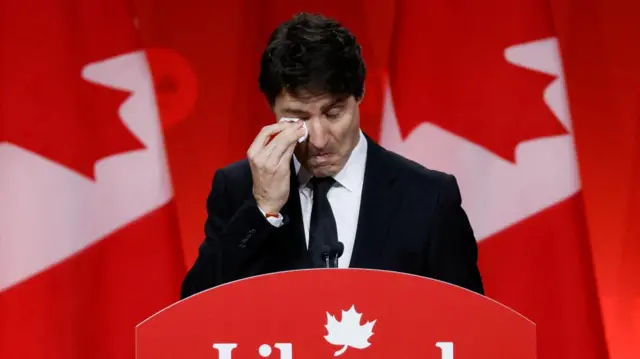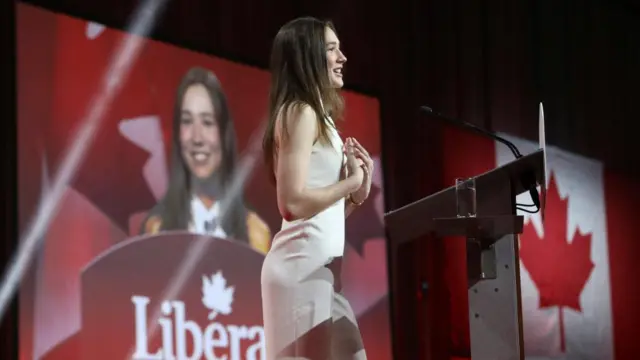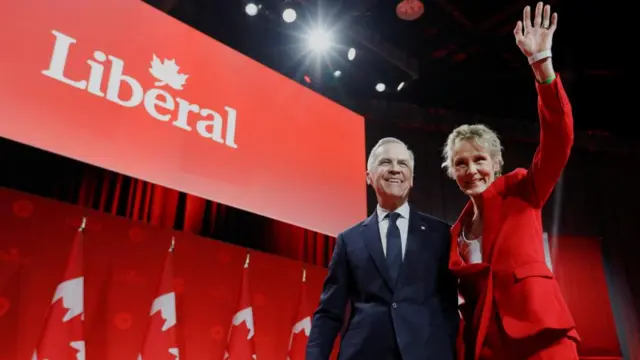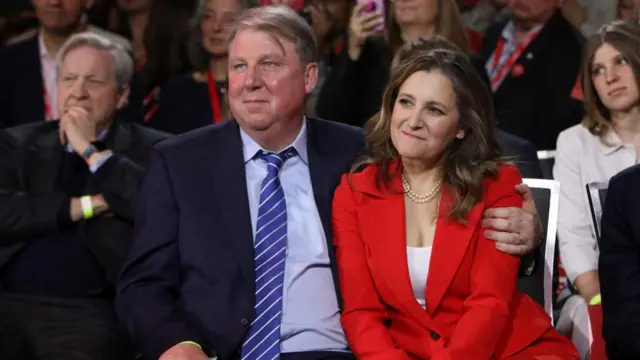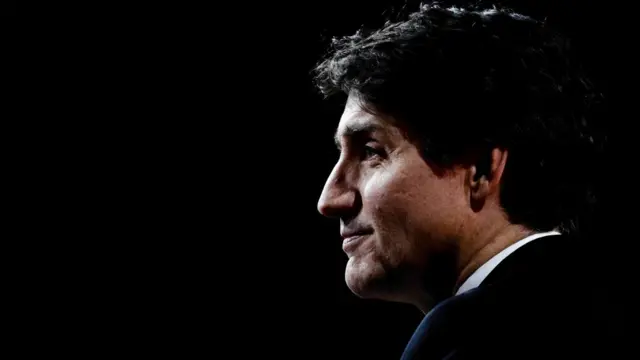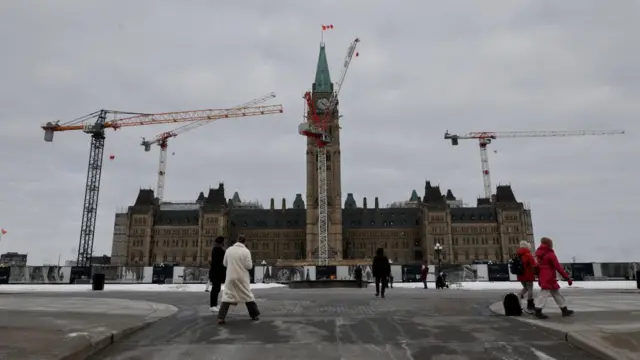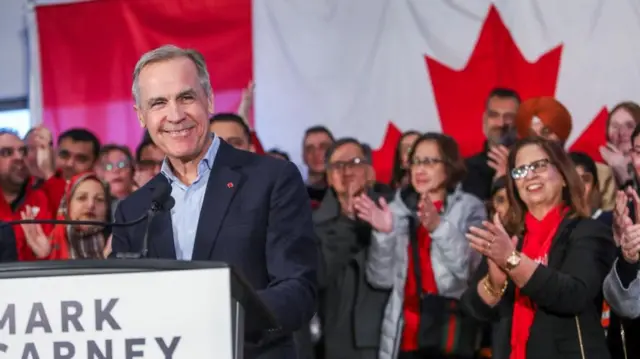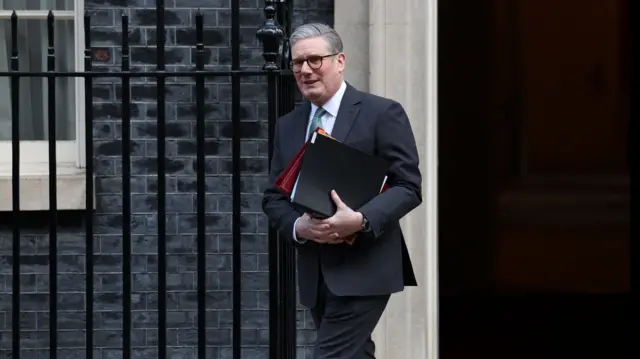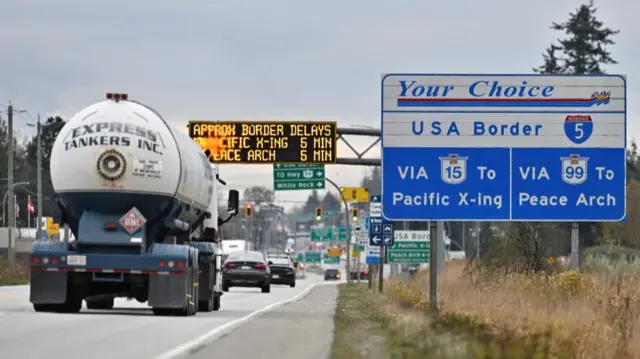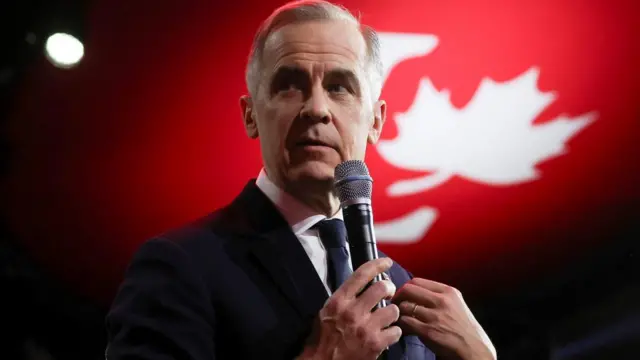Ontario's Doug Ford celebrates Carney's leadership at 'critical time'published at 14:14 GMT 10 March
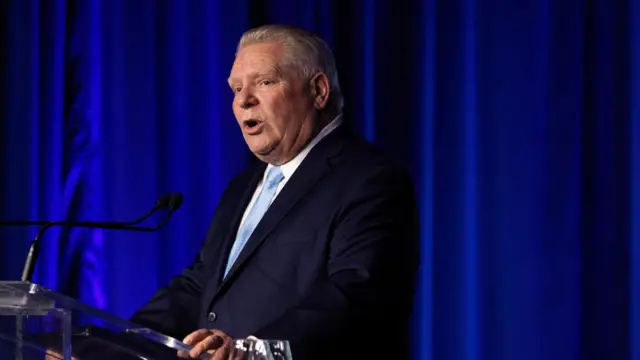 Image source, Reuters
Image source, ReutersNot long after Mark Carney was declared the winner in the Liberal leadership race on Sunday night, Ontario Premier Doug Ford was offering his congratulations.
The Progressive Conservative has said he is looking forward to renewed leadership "when it comes to supporting projects that will unleash the economic potential" of Canada.
"Your election comes at a critical time as our country continues to stare down the ongoing threat of President Trump’s tariffs," he says.
A fresh test of that unity might be coming today, when Ford is expected to provide more details about his provincial government's plans to cut off power supply to the US if President Donald Trump continues with tariffs against Canada.
He has said he would implement a 25% surcharge on Canadian electricity exports to three US states: Michigan, New York and Minnesota, and would consider completely cutting those states off from Canadian power if the US tariffs were escalated.
That news conference is scheduled to begin at 11:00 EDT (15:00 GMT), but we'll be poised to bring you the key lines when it gets under way.
